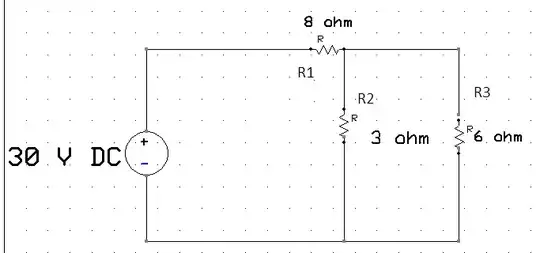In nodal analysis, one solves for the node voltages. There are 3 nodes in your circuit one of which is the datum or zero node. In this circuit, the zero node should be the one the negative end of the voltage source connects to.
The voltage at the node that the positive end of the voltage source connects is 30V by virtue of the voltage source connected there.
Thus, the only unknown node voltage is the node the three resistors connect to. Let's label that node voltage \$V_A\$.
Then, by KVL, the resistor voltages are:
\$V_1 = 30V - V_A\$
\$V_2 = V_3 = V_A\$
So, how to solve for \$V_A\$?
Write a KCL equation at that node:
\$\dfrac{V_1}{R_1} = \dfrac{V_2}{R_2} + \dfrac{V_3}{R_3}\$
Substituting the equations from the first part into the equation above yields:
\$\dfrac{30V - V_A}{R_1} = V_A \left( \dfrac{1}{R_2} + \dfrac{1}{R_3} \right)\$
Now, solve for \$V_A\$ and then for the resistor voltages. You'll find that the answers match the answer sheet.
